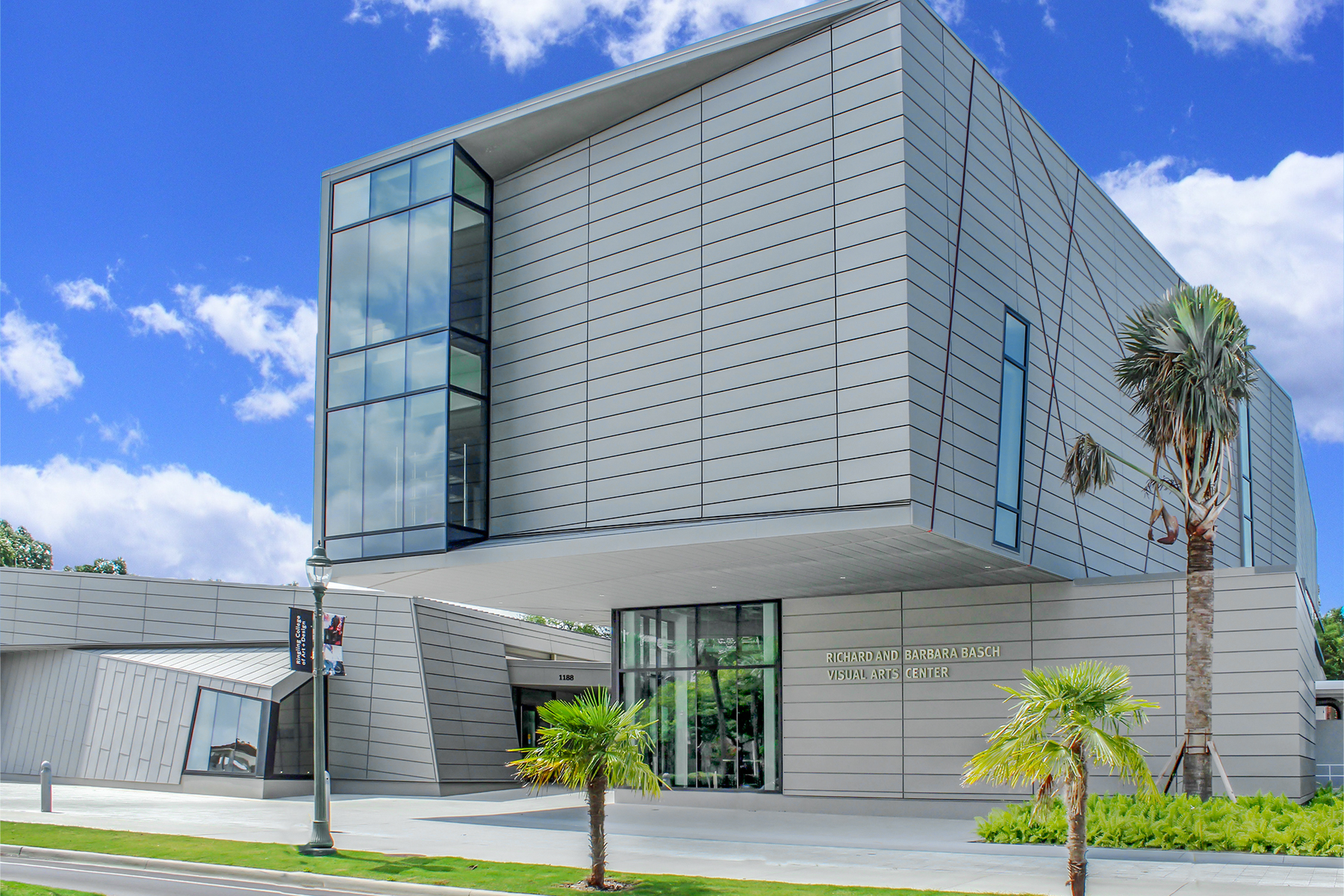Ringling College of Art and Design Richard Barbara Basch Visual Arts Center
Certified LEED v2009 Silver
2016, AIA Florida Gulf Coast, Merit Award for Unbuilt Design
Overview
New three-story facility featuring the college’s first glass hot shop, along with classrooms and studios for woodworking, clay, metal, 3D printing and laser cutting. Energy-efficiency measures include demand control ventilation, LED lighting and low-flow plumbing fixtures.
Features
Sustainable practices were implemented, and the project achieved LEED Silver certification. The majority of the three-story facility is conditioned by a dual-path air handling system that yields energy savings and improved dehumidification during part-load operation. Among the other energy-efficient features are demand control ventilation, premium-efficiency motors for MEP equipment, carbon dioxide sensors and LED lighting. These measures are projected to reduce energy consumption by 15.9% compared to the ASHRAE 90.1 baseline. Low-flow plumbing fixtures are used to conserve water, further contributing to the efficiency of the facility.
One key challenge faced by TLC engineers involved developing mechanical systems to meet the varying uses of the building. The glass shop has high temperature exhaust fans for kilns and hot working areas, along with make-up air fans and industrial high volume low speed ceiling fans for space ventilation. To protect the deterioration of artwork from increased moisture in the environment, the gallery is set to maintain an average of 68 to 72 degrees F and to not fluctuate in humidity by more than 50% within a 24-hour period.
Another challenge consisted of acoustical requirements for the instructional and gallery spaces. Exhaust fans are equipped with silencers, the wall between the mechanical room and gallery has an acoustical sealant and return air ducts are lined with thick internal duct lining to keep noise levels to a minimum.
The entire building is integrated with technology to support student success and engagement. The center has 100% wireless data network coverage to keep students connected 24/7. Crime Prevention Through Environmental Design (CPTED) strategies were applied, resulting in an electronic access control and a CCTV video surveillance system that monitors the interior and exterior of the facility.
